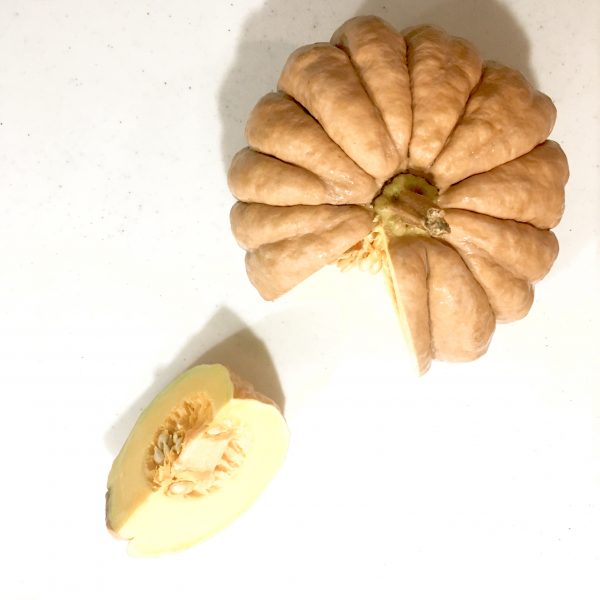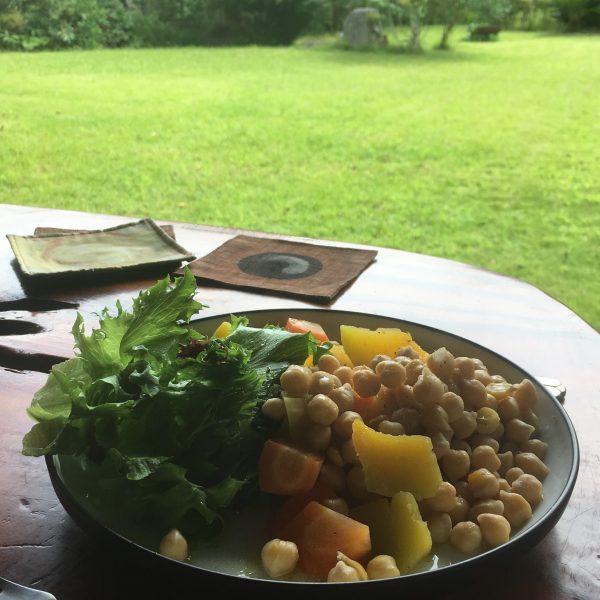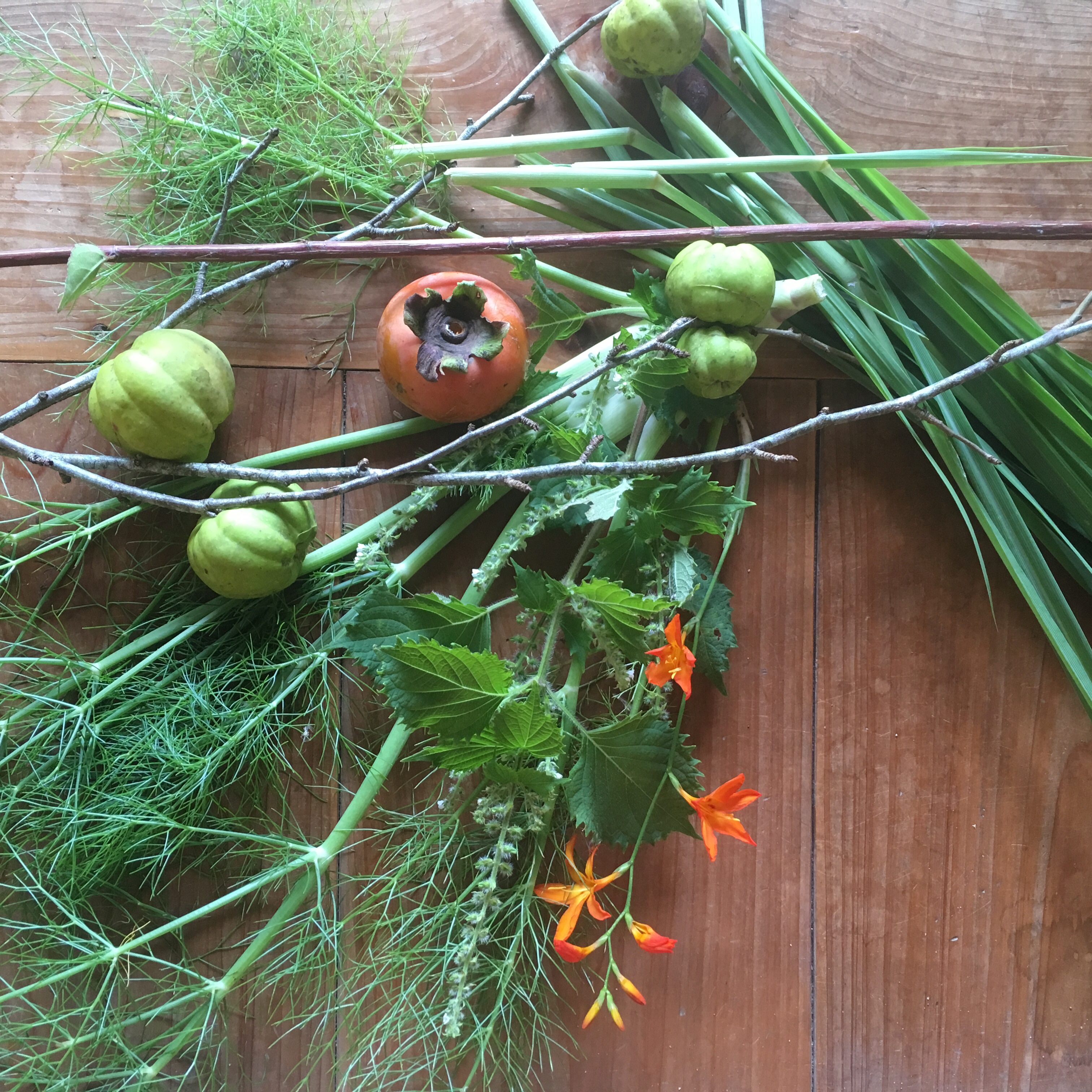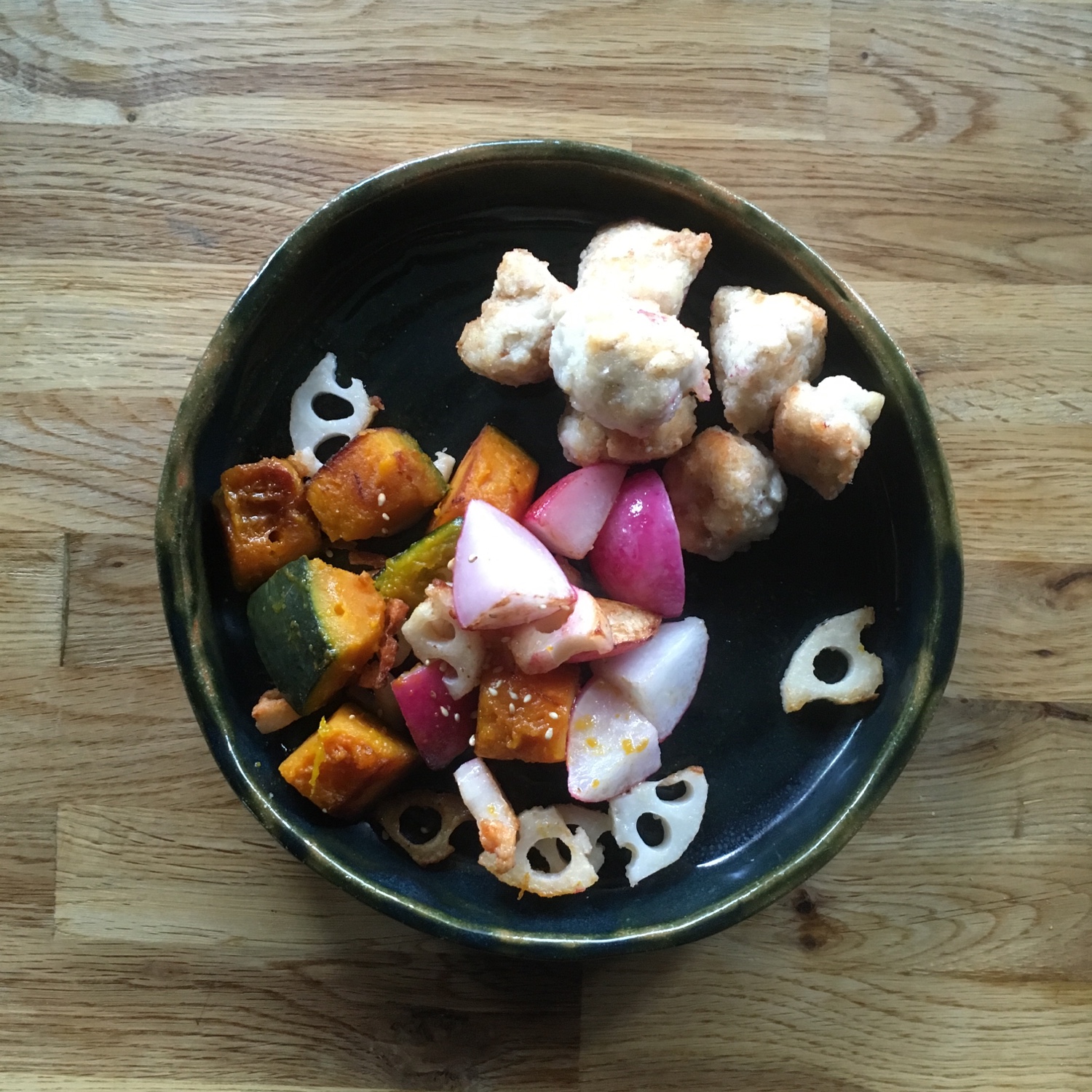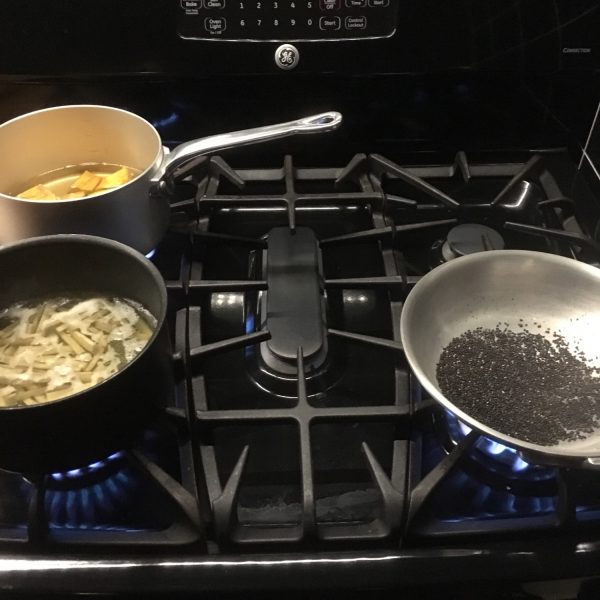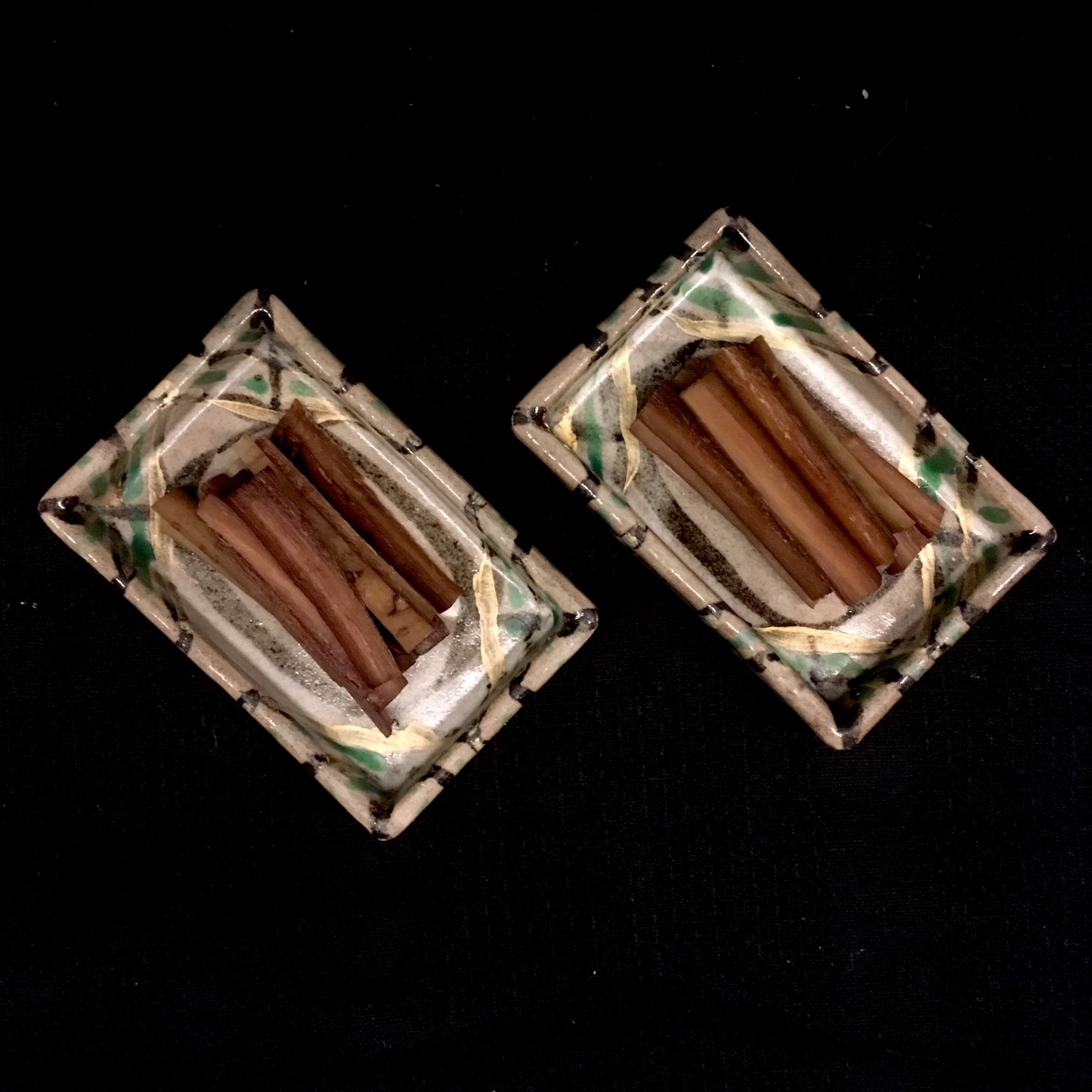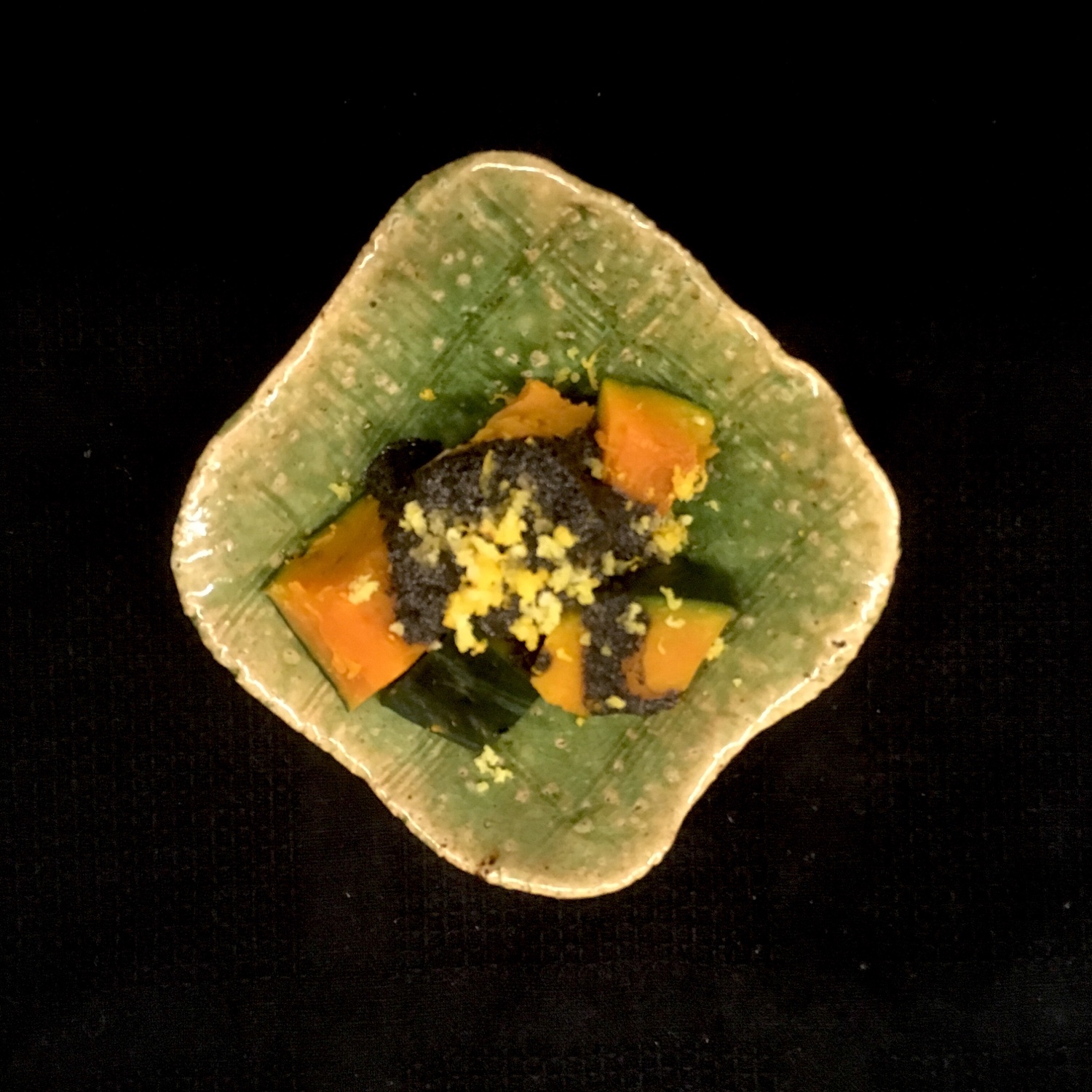While spring is definitely in the air, and I am craving for spring greens which are not yet quite there (the one available come from the far away south of Japan), I was thinking that before entering that green season, eating a last kabocha would be great. Indeed since December I cooked cauliflowers, romanescos, broccolis, and many carrots and sweet potatoes and shiitake as well, but no kabocha. So before the season ends I decided to take that last opportunity to eat some. I use kabocha in many places: pot of vegetables, curry rice…
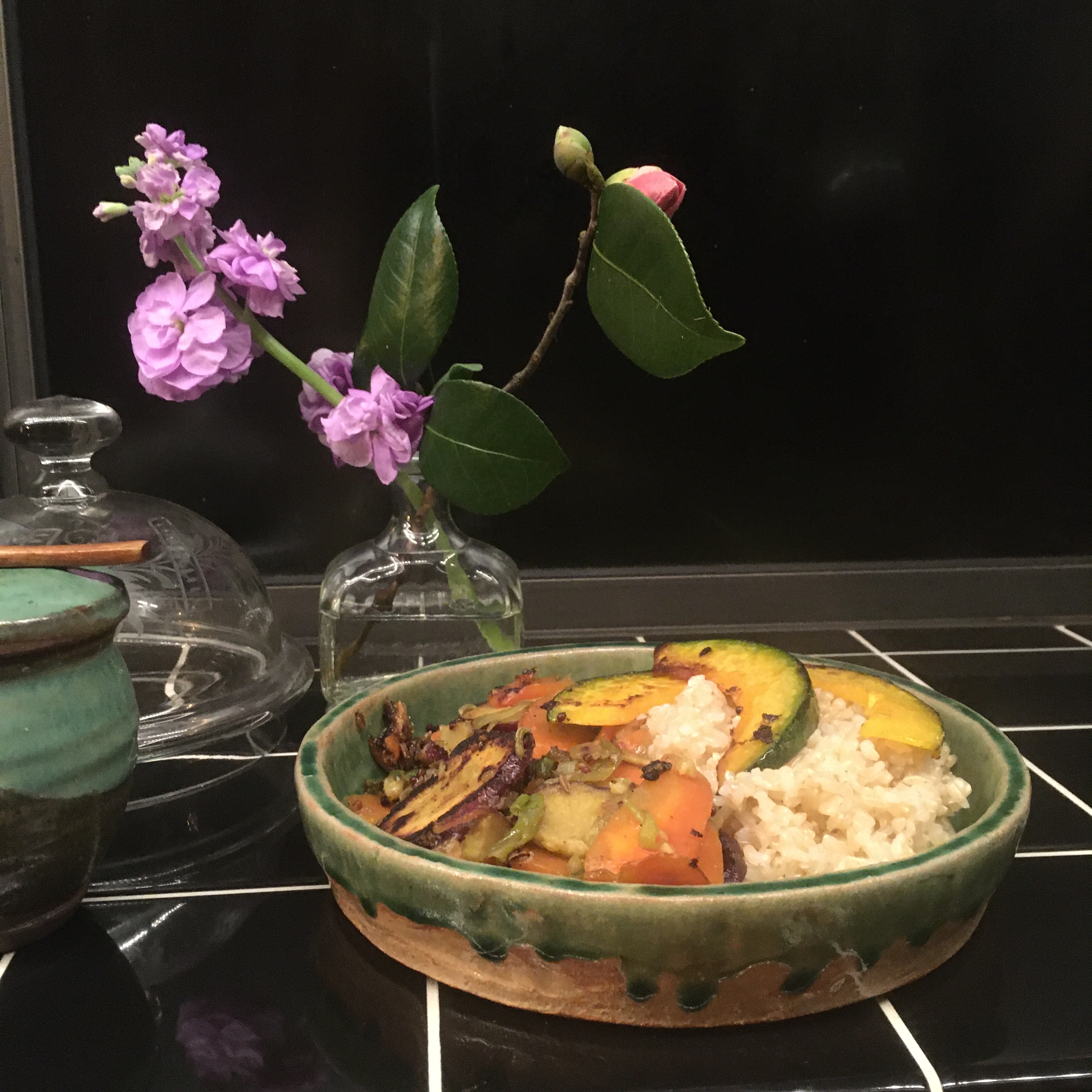
There are two things I really love, at least, and I wanted to prepare with kabocha. One was kabocha pasta, the other is sui gyoza with kabocha. But I made a variation of the recipe I proposed in December, a vegan version. And it was so delicious that I can’t wait to share this new ultra simple recipe!!!
Super easy kabocha pasta (1 serving)
– 60g of dry penne
– 100g of kabocha (a 3cm thick slice)
– a little handful of nuts (I use a mix of almonds, walnuts, hazelnuts, cashews, pecan) so it’s basically 2-3 of each
– a flavorful olive oil
– salt and pepper
Start boiling the pasta, in the meantime wash and cut the kabocha. 4min before the pasta are ready add the kabocha. When pasta are cooked drain well. In the pan used to boil the pasta start roasting the nuts and crush them roughly.
Add olive oil generously and put back the drained pasta and kabocha. Stir well to have an homogeneous mix and add salt and pepper. Serve immediately and eat. Delicious also prepared in advance and re-heat in the pan until the nuts and kabocha caramelize a bit…
That’s it!!!
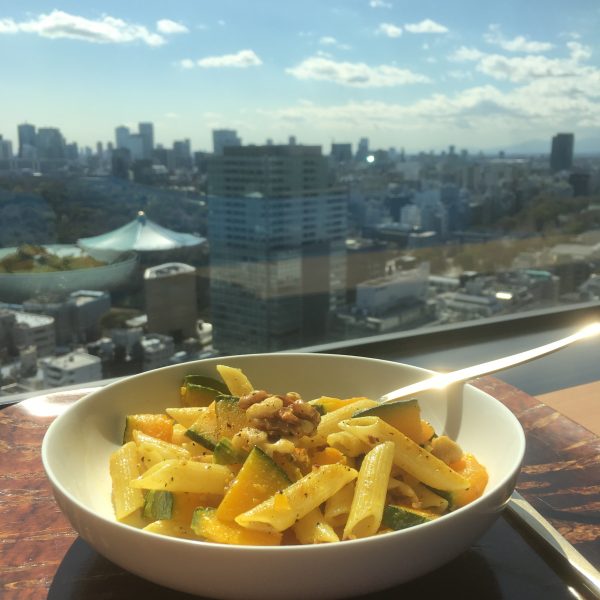

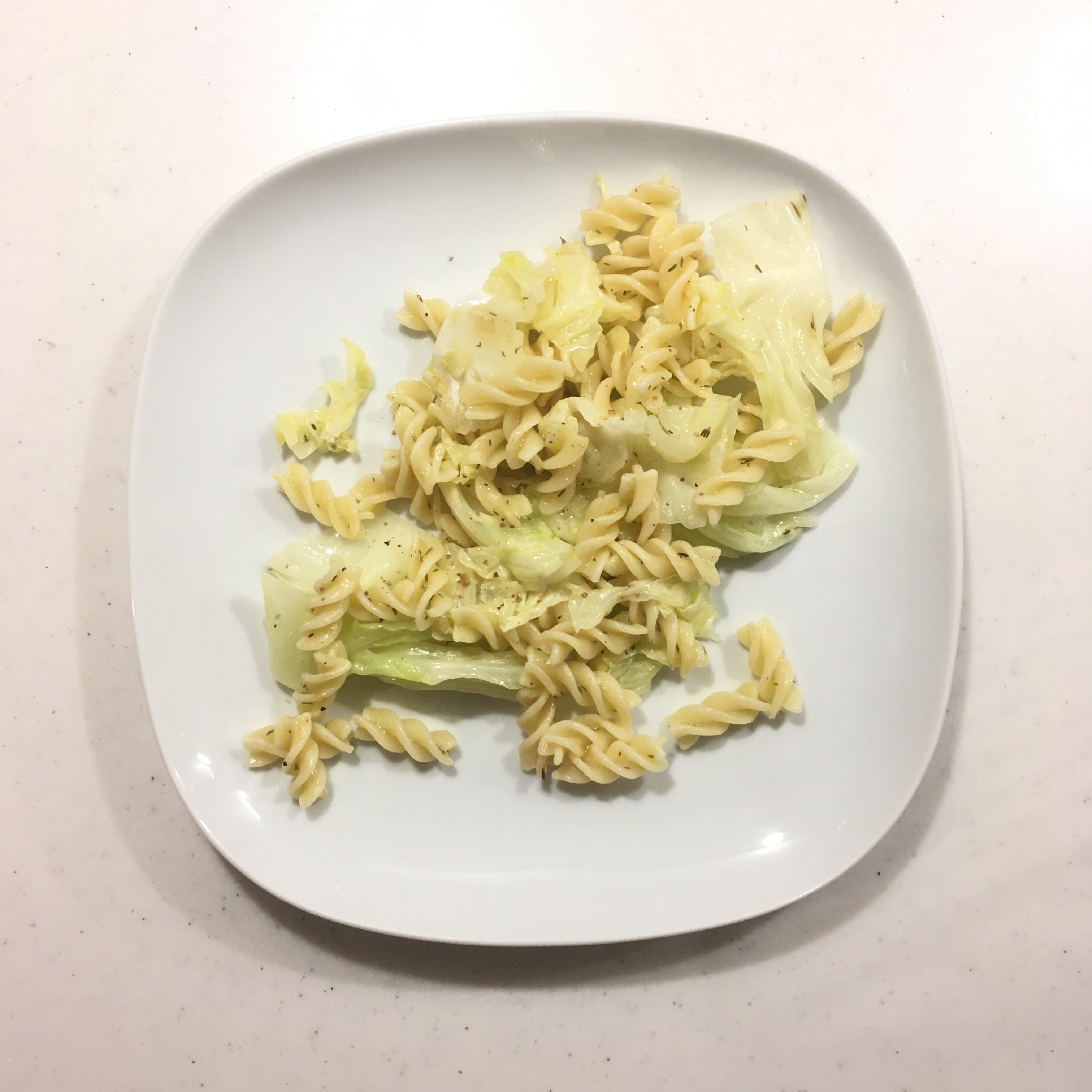
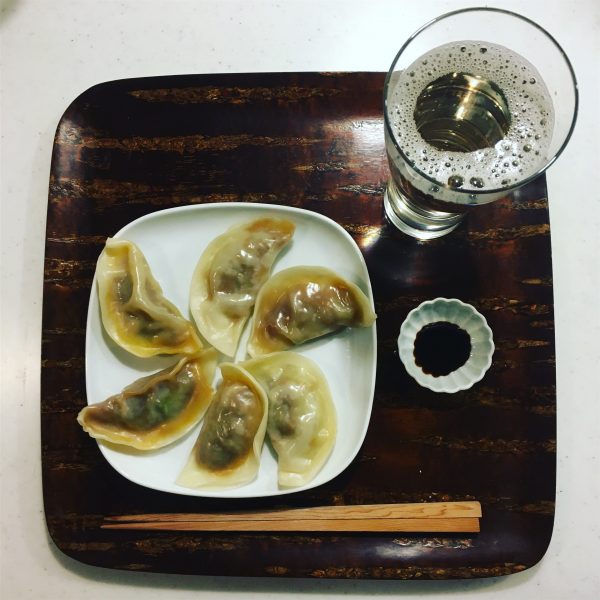


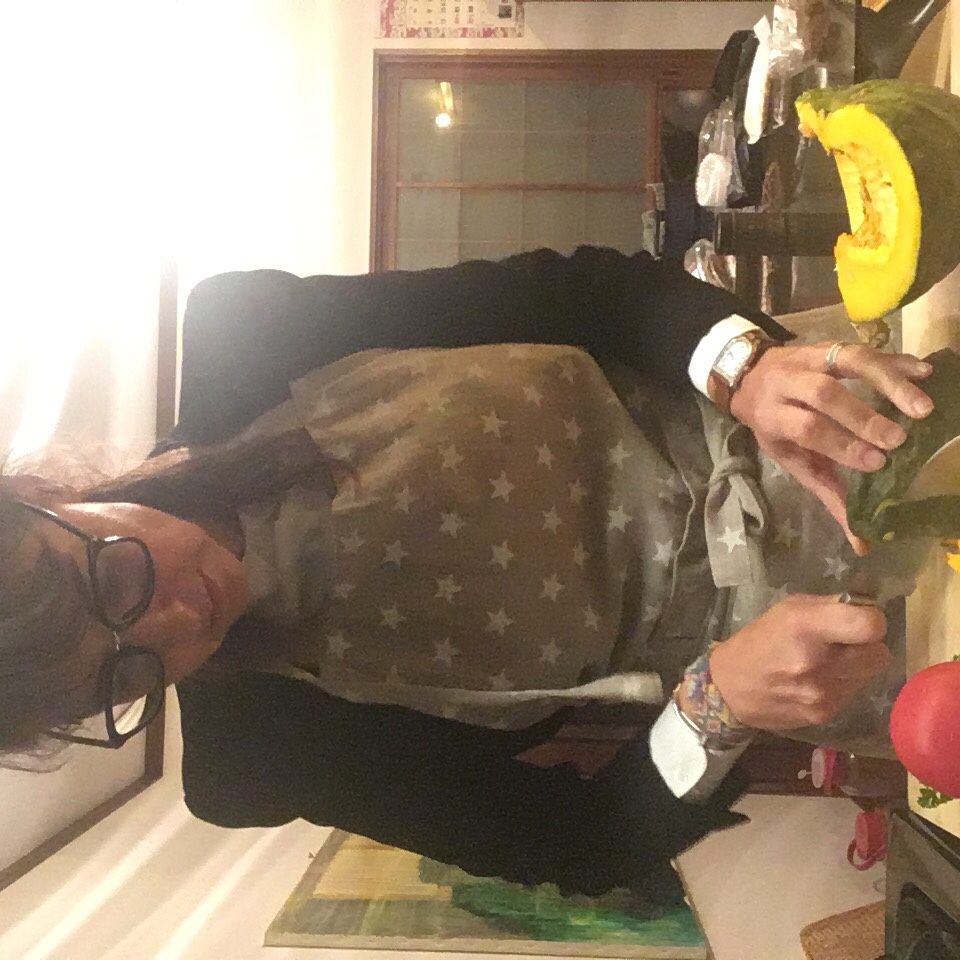 Well I was preparing dinner with the leftover veggies: kabocha and tomatoes. I also picked some fresh parsley in the garden and was thinking about what to do with them when the crave for soba noodles just came. All was decided… And that’s how this recipe of kabocha soba was born. It was so delicious that I really need to share it with you! Moreover because it’s been a while I haven’t shared a proper recipe!!
Well I was preparing dinner with the leftover veggies: kabocha and tomatoes. I also picked some fresh parsley in the garden and was thinking about what to do with them when the crave for soba noodles just came. All was decided… And that’s how this recipe of kabocha soba was born. It was so delicious that I really need to share it with you! Moreover because it’s been a while I haven’t shared a proper recipe!!